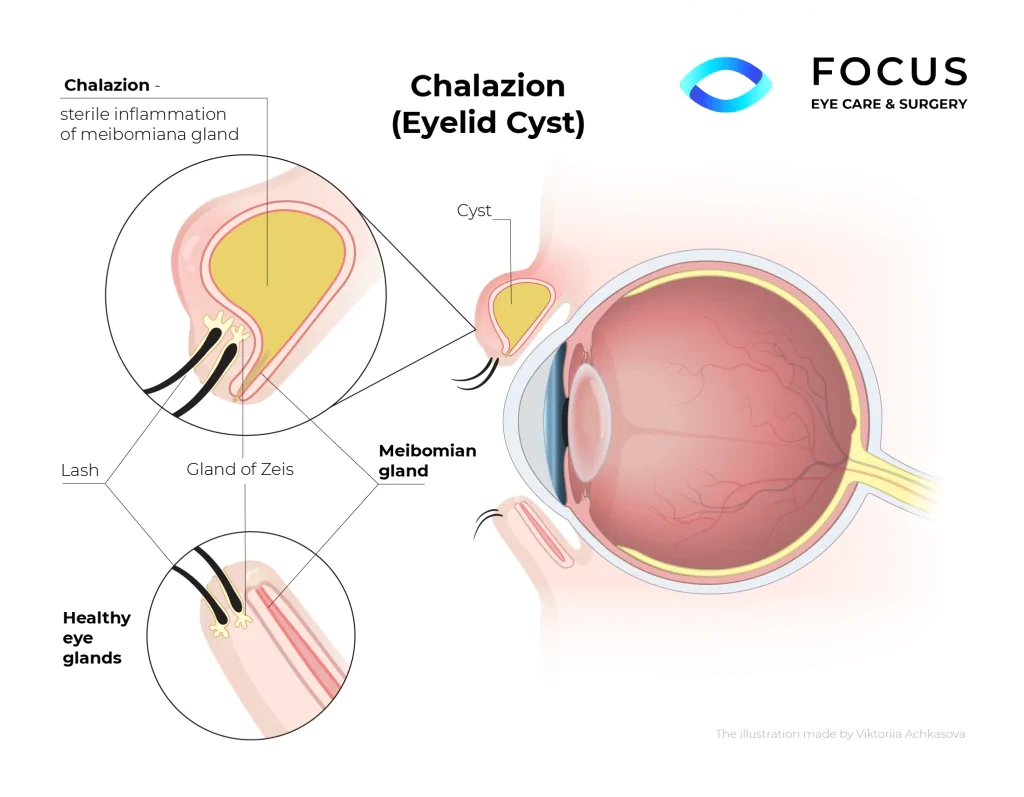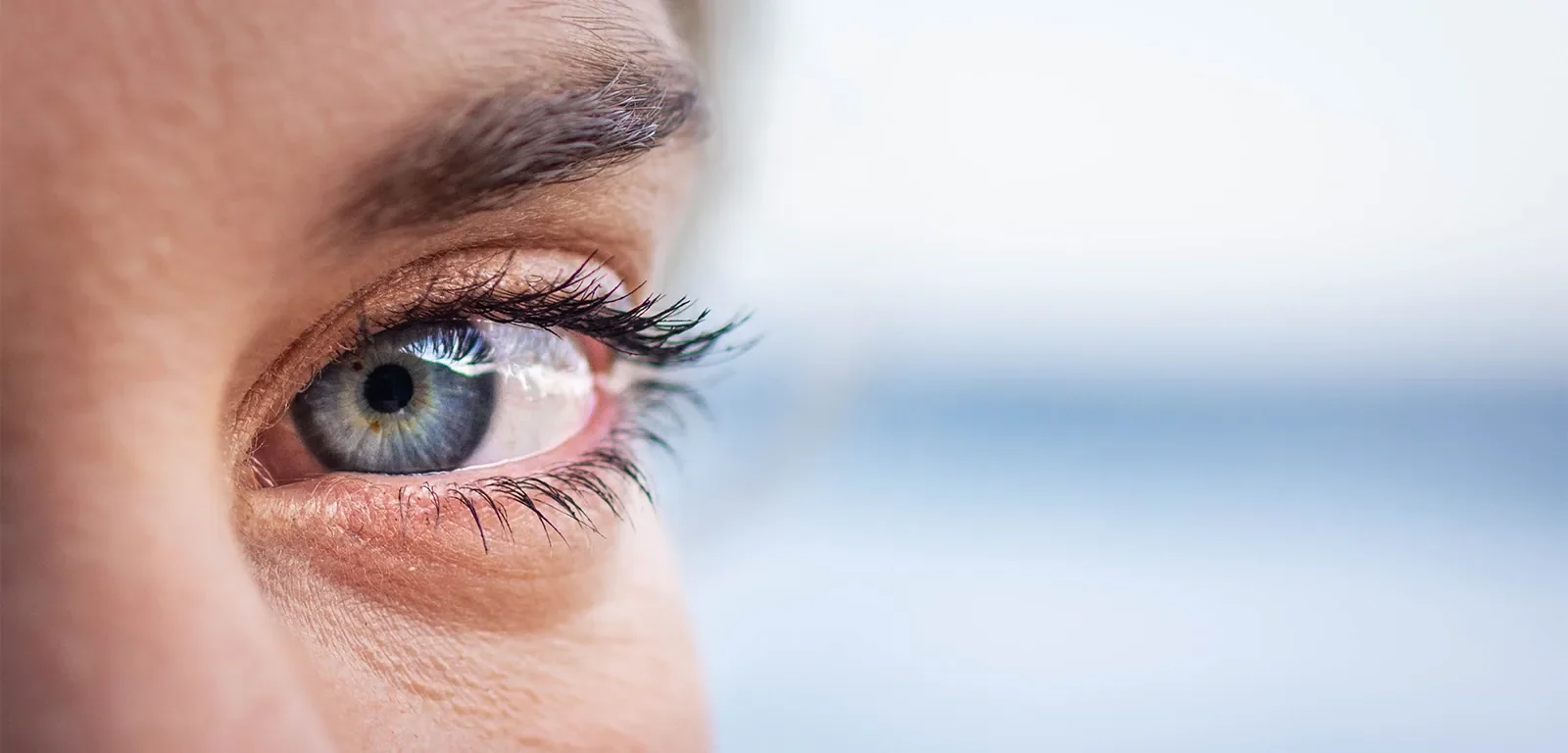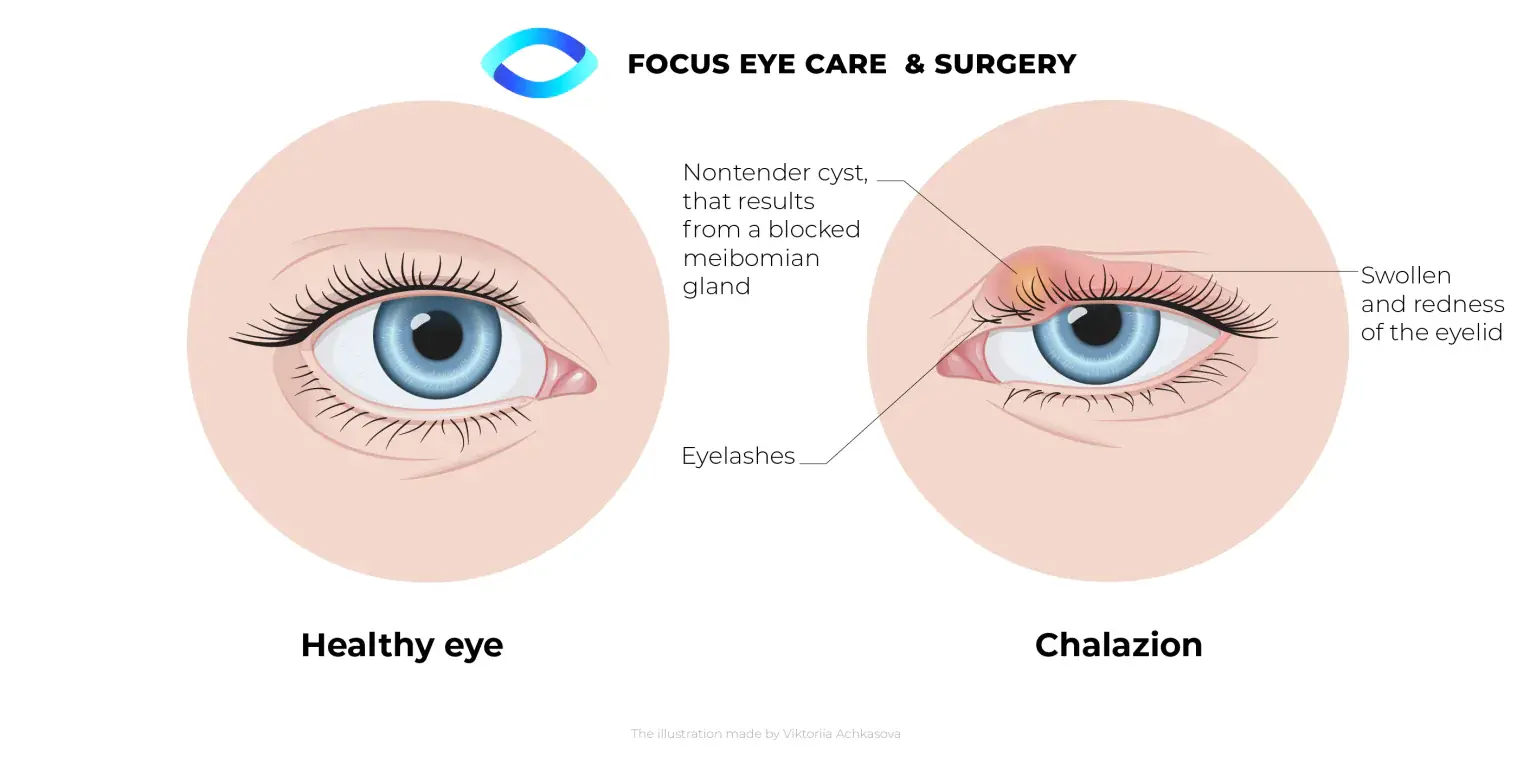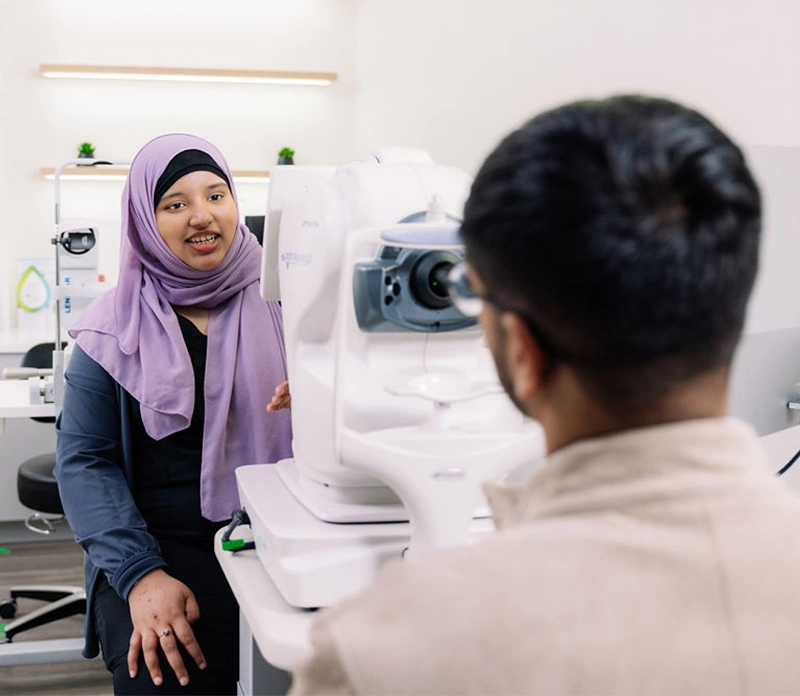
Chalazion
Chalazion
What is Chalazion?
A chalazion is a small, red, swollen lesion affecting the eyelids. It occurs when the oil glands in the eyelids get blocked, allowing sebum to accumulate within the oil gland. This collected sebum can get infected with bacteria. A chalazion is different from a stye, which is a condition of the eyelids that occurs at the base of the eyelashes.


Unlike a stye, symptoms of chalazion usually come on gradually over a few weeks. A chalazion is usually painless but may cause mild discomfort. Symptoms of chalazion include:
- A swelling or lump on the eyelids that is red in color.
- Mild tenderness of the swollen lump may be present in some cases.
- Vision may be obscured by the lump or may appear blurred from the pressure of the lump.
- Some cases of chalazion may progress to entire swollen eyelids and difficulty opening the eye.
Causes of Chalazion
The eyelids contain small oil glands called meibomian glands, which secrete oil to lubricate the eye surface and prevent tears from evaporating easily into the atmosphere. These oil glands can get clogged from debris and lead to chalazion.
The unsecreted oil can accumulate within the gland and get infected with bacteria. This process does not occur overnight and is usually a progressive condition gradually developing over a few weeks

Chalazion Treatment
A chalazion may resolve on its own within a few weeks, but certain measures can help accelerate chalazion resolution. Some of the treatment methods are:
Warm compress: Compress the eye with a soft cloth dipped in warm water for 15 minutes, 4 to 5 times a day. This can help open up the blocked gland and release the hardened sebum that has accumulated within the oil gland. This can also clean out any debris along the eyelids.
Antibiotics: Antibiotics may be prescribed sometimes for chalazion, but they are not routinely used. Oral antibiotics are rarely used, and ophthalmologists usually prescribe topical antibiotic eye drops or ointments.
Steroids: Steroids may be used by the ophthalmologist for slow healing chalazion, or for chalazion that cause significant discomfort. If the chalazion does not decrease in size over time and causes vision problems, a steroid injection may be tried to accelerate healing.
Drainage: If the chalazion does not go away, if it causes significant discomfort, or if it obscures vision significantly, then a surgical incision to drain the chalazion may be tried. Local anesthesia is usually used for making a small incision to remove the hardened chalazion. For softer chalazion, simple drainage with a syringe may be done.

FAQs About Chalazion
A chalazion usually resolves on its own over several months. But you can try the following treatments to accelerate the healing process: A warm compress with a soft cloth for 15 minutes, 4 to 5 times a day; Antibiotic eyedrops may be used to treat an acute infection; Steroid injection can be tried to treat stubborn chalazion; Surgical incision and drainage.
A chalazion is a small bump in the eyelid that is caused by a blocked oil gland. It usually resolves on its own over several months even if it is left untreated. Most chalazion never lasts longer than two years. Although a chalazion is a painless lump, it can cause tenderness, discomfort, and vision problems.
No, you must never try to pop a chalazion. Popping a chalazion may cause more harm than good. You may infect the chalazion with bacteria in your fingers, or you may cause significant tissue damage that can develop scarring. A scarred chalazion may result in disorders such as entropion, in which the eyelashes turn inwards. This inward folding of eyelashes can scratch or infect the cornea.
A chalazion is caused by blockage of the oil gland, known as the meibomian gland in your eyelid. This blockage can occur due to poor hygiene when cellular debris accumulates in the eyelid margins. The clogged pores block the outflow of sebum from the oil gland, and this blocked sebum can then get infected by bacteria or viruses.
Can Chalazion Be Permanently Cured?
Yes, with treatment, a chalazion can usually be permanently removed. If treatment with warm compression, antibiotics, and steroid eye drops fail to resolve the chalazion, surgical drainage or removal of hardened chalazion may be necessary. If there is a frequent recurrence of chalazion, then a biopsy to examine the eyelid tissue may be done.
Chalazion usually resolves on their own within 2 to 8 weeks. If a chalazion does not resolve within this time, then surgical removal can be tried. Also, if the chalazion is causing significant discomfort or obscures vision, then it can be removed. Depending upon the size and consistency of the chalazion, a surgical incision or simple drainage may be done.
Stye and chalazion are not the same. Although both conditions affect the eyelid, a stye occurs at the base of eyelashes whereas a chalazion occurs deeper in the eyelid where oil glands are located. Furthermore, a stye is very painful while a chalazion is usually a painless condition.


Are You a Candidate for
Vision Correction?
Whether you just need a general eye exam, or if you are interested in reducing or eliminating your need for glasses or contacts, our team is here to help! Contact us to book an appointment today!
The doctors at Focus Eye Care & Surgery have reviewed and approved this content.
Page Updated:


